Onboarding is more than just paperwork and introductions—it’s the foundation for long-term success. A well-structured employee onboarding process helps new employees feel welcomed, understand their roles, and quickly become productive members of your team.
In this guide, we’ll walk you through the key steps to create an effective employee onboarding process. From the first day to the first few months, you’ll learn how to set your new hires up for success, ensuring they feel confident and ready to contribute. Let’s dive in and make onboarding a positive, seamless experience for everyone.
What is Employee Onboarding?
Employee onboarding, also known as new employee onboarding, is the process of integrating a newly hired or newly promoted employee into an organization. It is an important step in the employee lifecycle and involves a series of activities and interactions designed to help the new employee adapt to their new role, understand the company culture, and become productive as quickly as possible. Effective onboarding can have a significant impact on an employee’s job satisfaction, performance, and long-term retention.
Check out our comprehensive guide on employee onboarding to learn more about it in detail.
Employee Onboarding Process
Employee onboarding process involves a series of steps and activities to help new employees become acclimated to their roles and the organization.
Step 1: Prepare before day one
Before your new hire’s first day, ensure everything is ready. Set up their workspace, provide necessary tools (like a computer or software access), and inform the team about their arrival. Having a plan in place shows that you are organized and care about making a good first impression.
Step 2: Welcome them warmly
On the first day, greet the new employee with a warm welcome. Introduce them to the team, give them a tour of the workplace, and make sure they know where to find important resources like restrooms and break areas. A friendly introduction helps ease any first-day nerves.
Step 3: Provide a clear orientation
Begin with a structured orientation session where you explain the company’s mission, values, and culture. This helps new hires understand the bigger picture and feel connected to the organization from the start. Cover essential policies and procedures so they know what is expected of them.
Step 4: Set clear expectations
Clearly outline the new hire’s role, responsibilities, and goals. Discuss what success looks like in their position and how their work contributes to the company’s objectives. This clarity helps them understand their priorities and how to focus their efforts.
Step 5: Offer training and resources
Provide the necessary training to help the new employee perform their job effectively. This may include hands-on training, online courses, or shadowing experienced colleagues. Ensure they have access to resources and support to continue learning and growing.
Step 6: Assign a mentor or buddy
Pair the new hire with a mentor or buddy who can guide them through the first few weeks. This person can answer questions, provide advice, and help them adjust to the company culture. Having a go-to person makes the transition smoother and more comfortable.
Step 7: Encourage feedback and communication
Create an open line of communication with your new hire. Encourage them to ask questions, share their experiences, and provide feedback on the onboarding process. Regular check-ins allow you to address any concerns and ensure they feel supported.
Step 8: Monitor progress and follow up
Keep track of the new hire’s progress through regular follow-ups. Assess their performance, offer constructive feedback, and adjust their training or support as needed. Ensuring continuous support and engagement helps them stay on track and thrive in their role.
Step 9: Celebrate milestones
Acknowledge and celebrate the new employee’s achievements, such as completing their first project or reaching their 90-day mark. Celebrating milestones reinforces their value to the team and boosts morale.
Step 10: Continue support beyond onboarding
Onboarding doesn’t end after the first few weeks. Continue offering support, resources, and professional development opportunities to help the employee grow within the company. A long-term approach to onboarding ensures that they remain engaged and motivated over time.
Employee Training Templates to Streamline Your Employee Onboarding Process
Here are ready-to-use templates to streamline your employee onboarding process.
1. Introduce the Company with a Company Timeline
An introduction to the company is essential to a new employee.
In addition to explaining the company mission and vision, you can also highlight the key achievements of the company. This will help set the background for the onboarding session ahead.
You can use a company timeline template or a company profile template like the ones below or a business model canvas to base your discussion about the company.
Company Profile Template
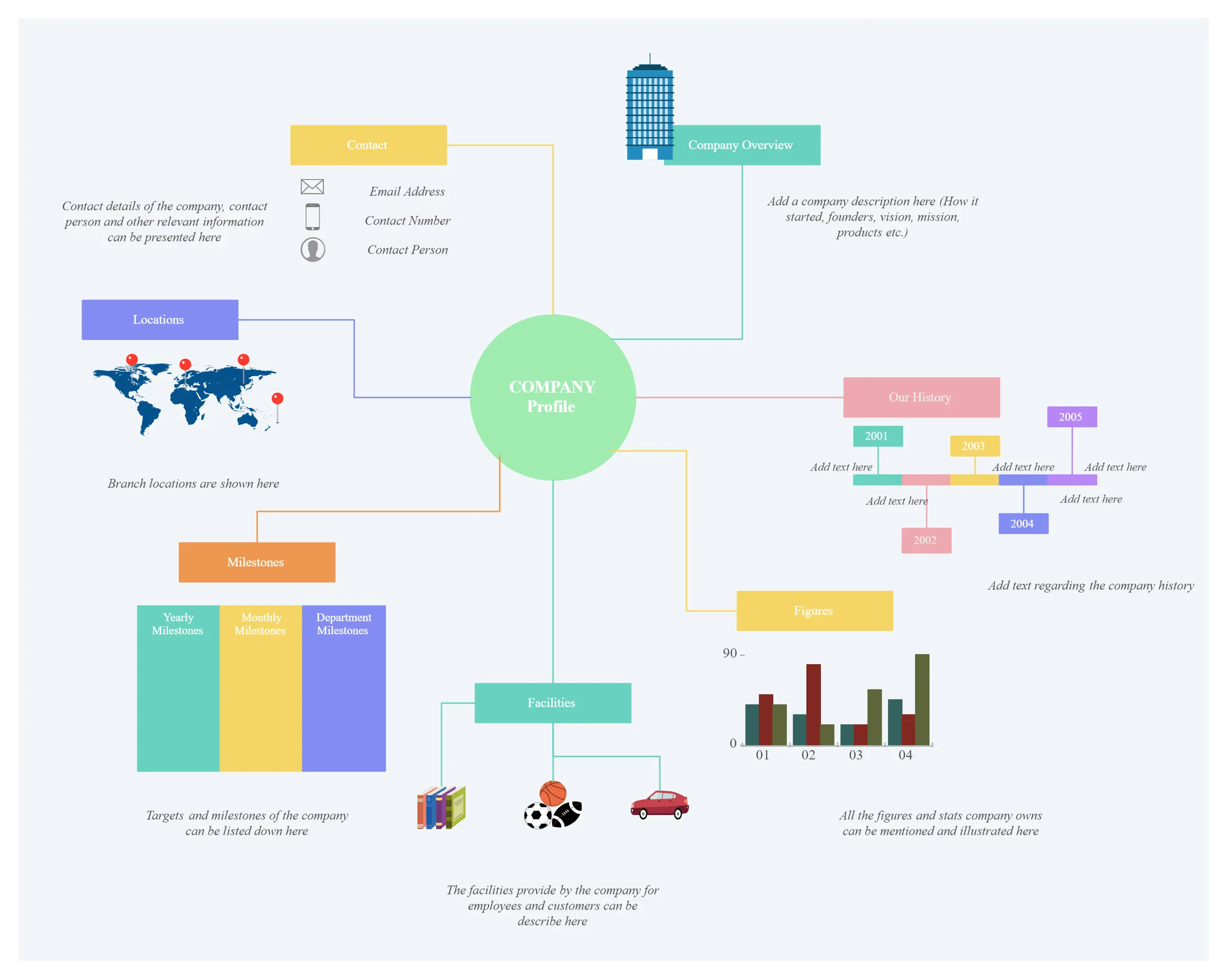
Company Timeline Template
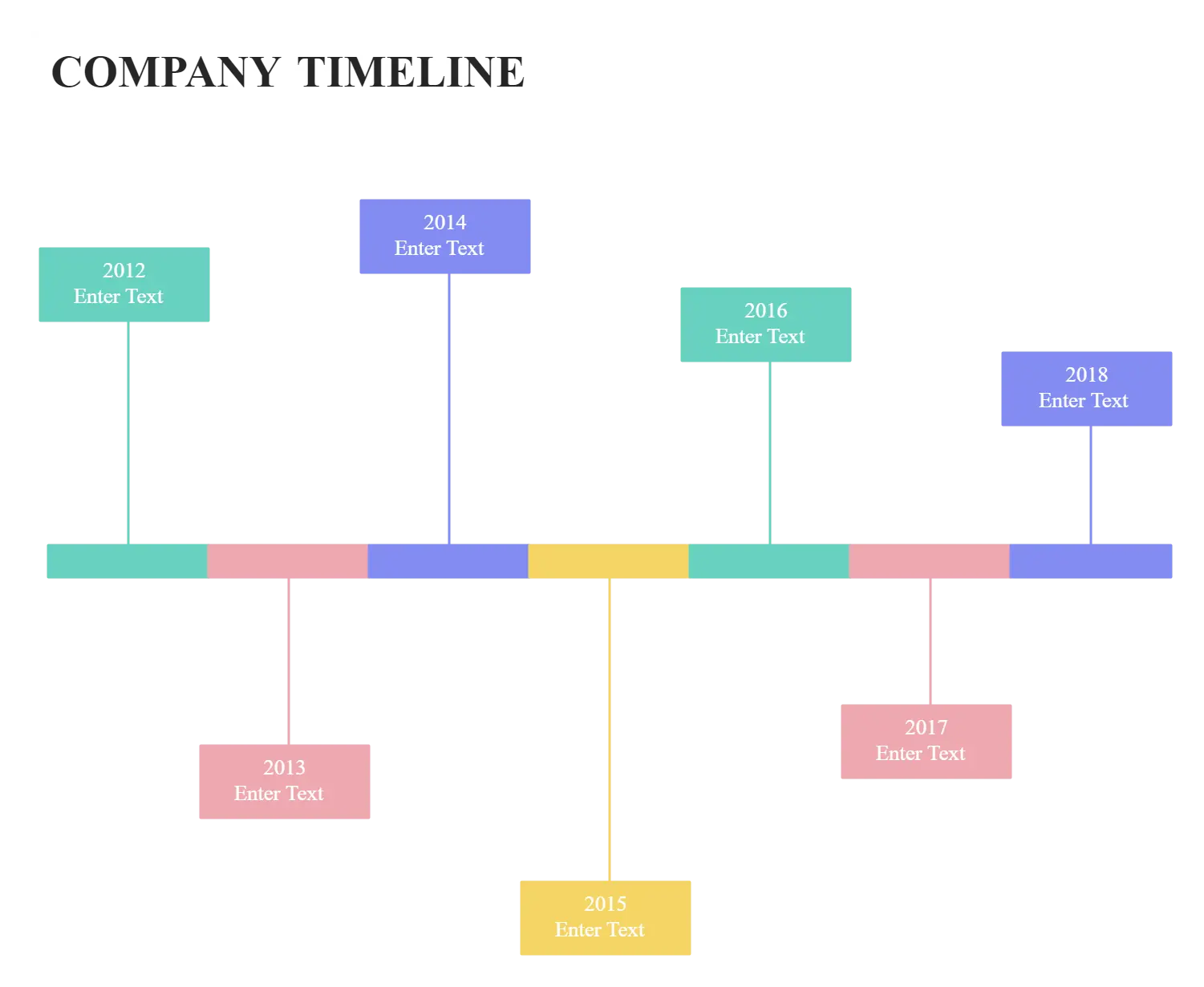
2. Highlight Their Responsibilities with Org Charts
Org charts are a handy way to highlight where your new employees fit into the department or the organization. The chart can also be expanded to include such information as employee responsibilities, skills, contact information, projects they are working on etc. in addition to the title they hold.
New employees can use this to get to know the people they’ll be working with and the reporting relationships within the department.
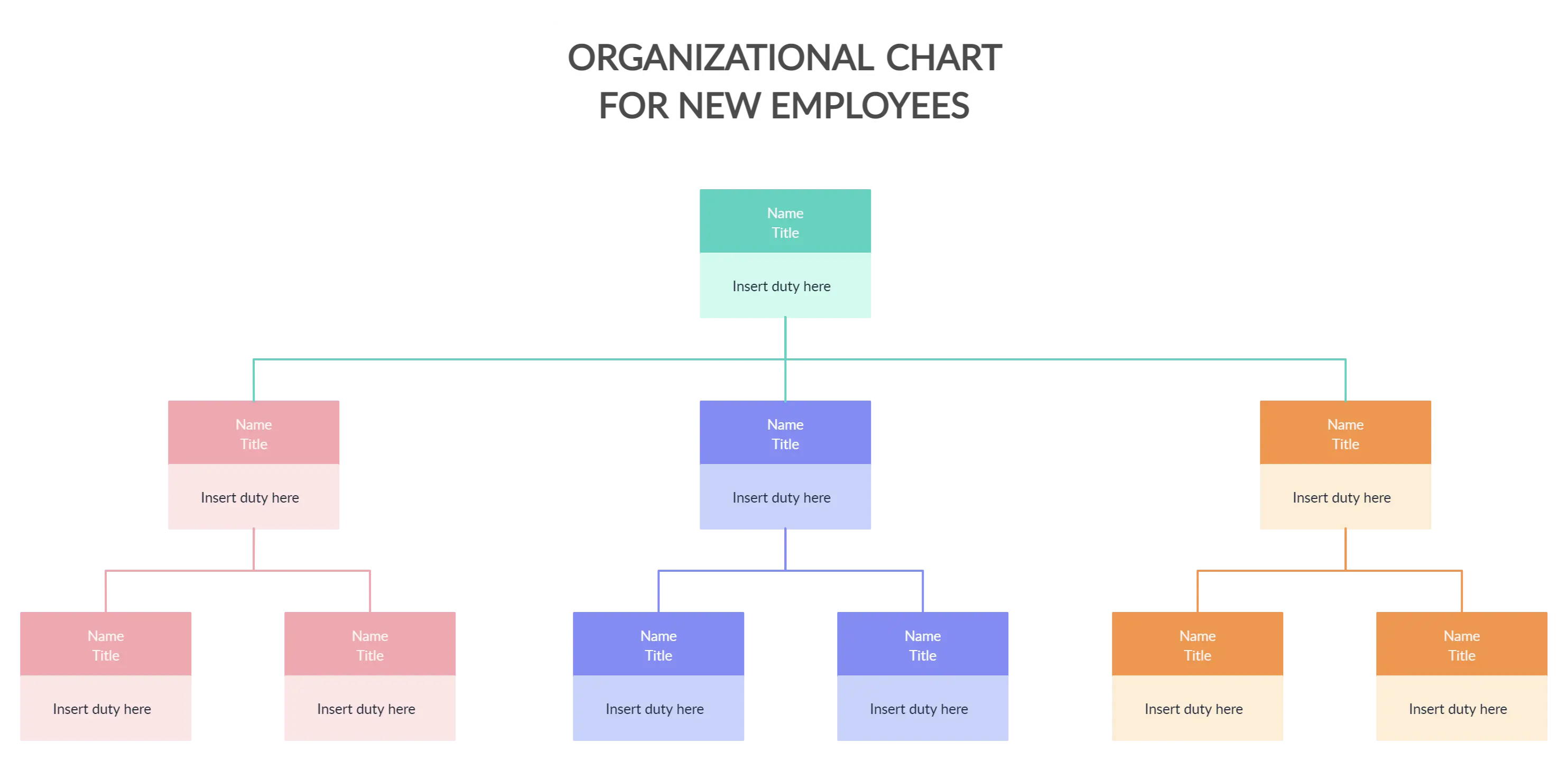
3. Explain Processes with Flowcharts
It might take new employees to get used to the workflows and the various processes within the organization.
While they should be given a proper practical training in carrying out the process steps they are responsible for, flowcharts or process maps can help them understand and familiarize themselves with the flow of the processes quickly.
With swim lanes, you can specify the roles or the departments responsible for each process step as well.
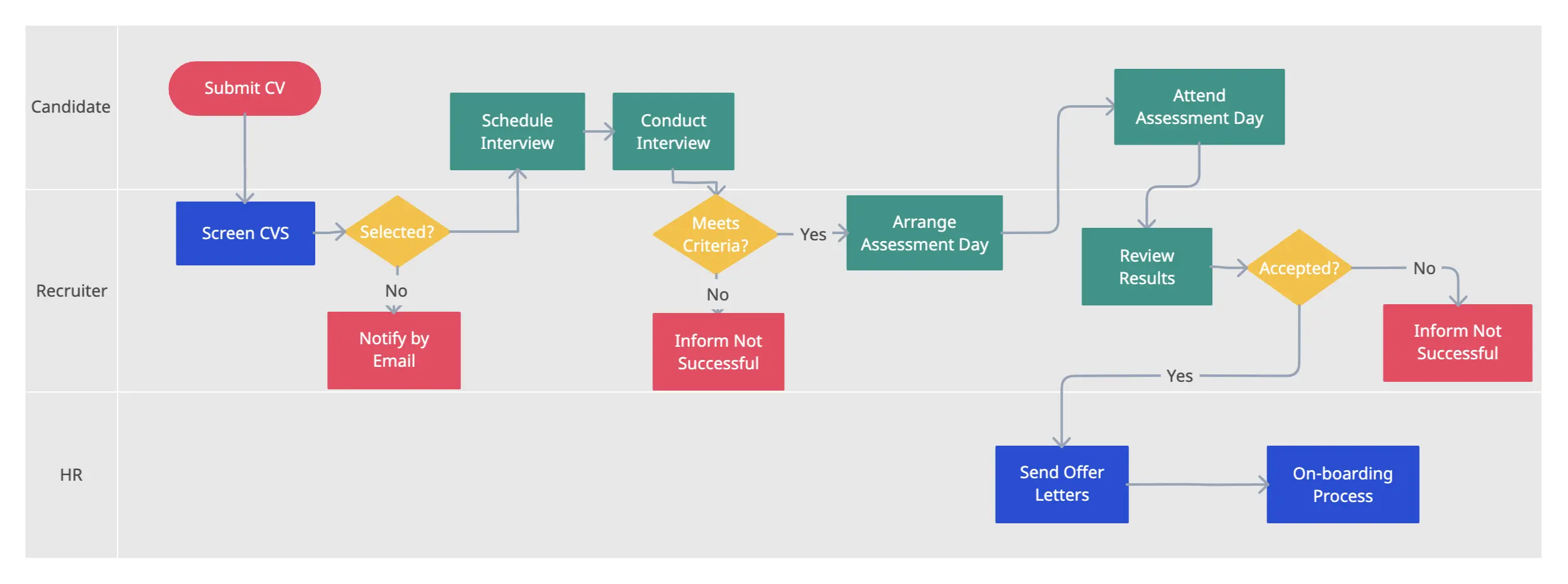
4. Help Them Set up Their Network with Network Diagrams
Not all employees are technically savvy, and they might need help from the IT department when setting up their network and computer stations.
A detailed network diagram can also assist them in setting up their network by themselves (if the process is not too complicated for them to understand). The benefit of having a network diagram explaining how to set things up is that they can always refer to it whenever they want and not rely on the support of the IT department.
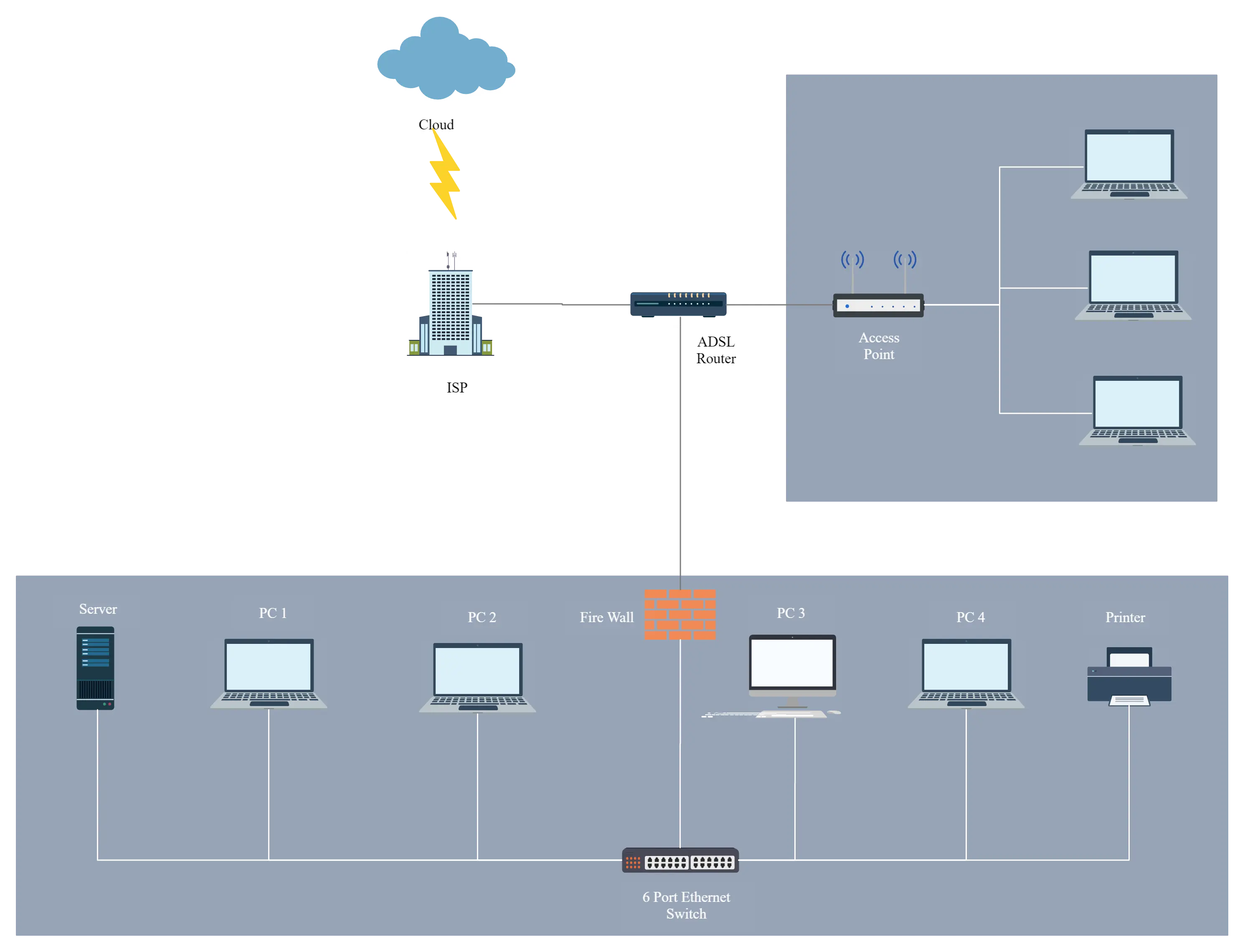
More Network Diagram Templates
5. Explain Complex Topics with Video/ Storyboards/ Infographics
During an employee training program, there are many topic areas to discuss. But if you present everything in boring documents or handbooks that span for pages, employees might lose interest and forget things easily. Plus they might not refer back to the text.
Instead, you can use videos, storyboards or infographics to discuss complex topics. For example, you can use a storyboard or a video to show how your new sales executives should interact with the customers step-by-step.
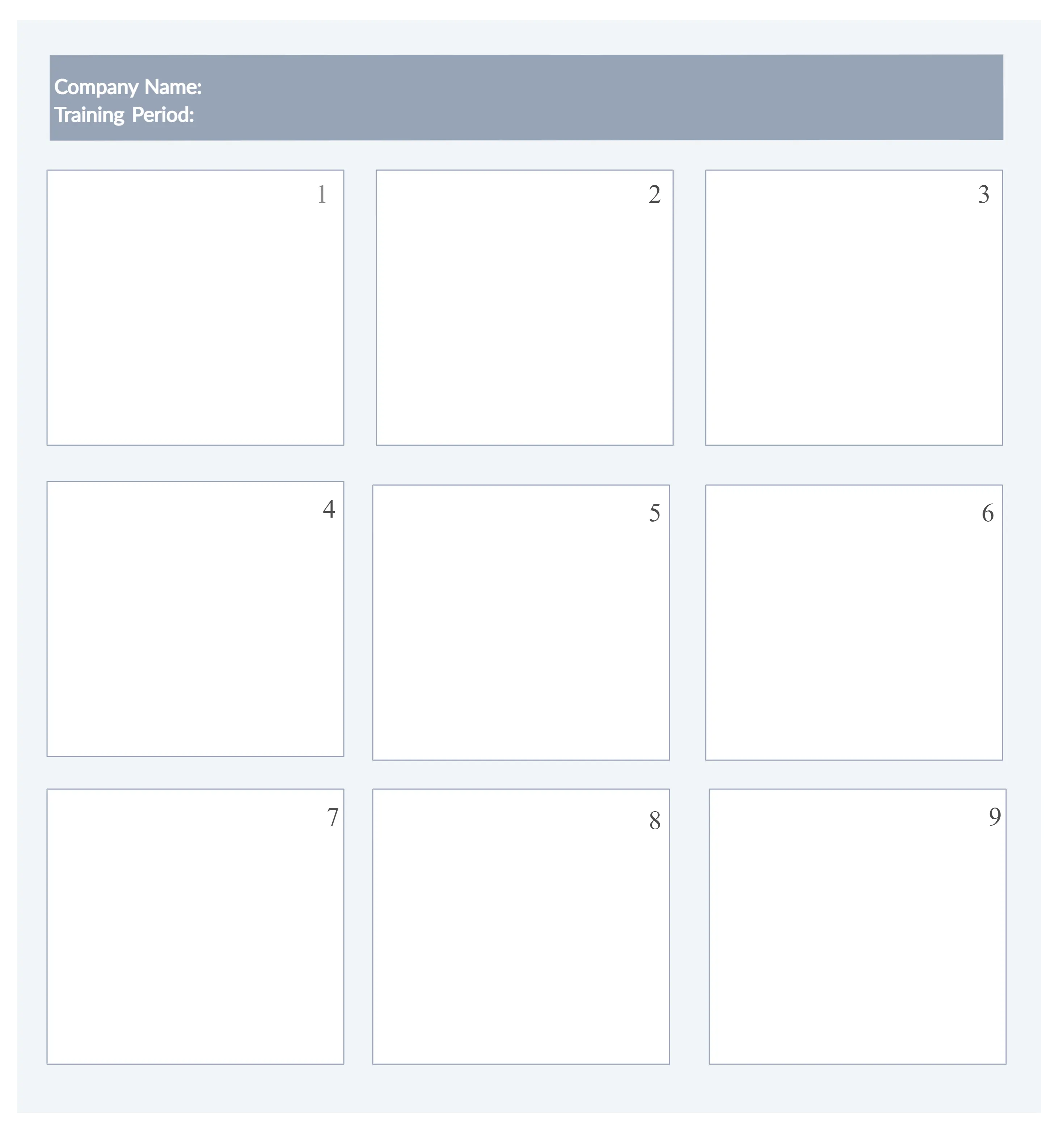
6. Provide Resources with Knowledge Maps
During the onbording (and after), there are a lot of resources the new employees will need to refer to. Some of these might be company policies, HR policies, process manuals, leave policies etc.
If there’s one place for them to access all these internal and external resources, it would make things so much easier.
Use a knowledge map like the one below so you can use it as a central location to store necessary resources for the onboarding new employees.

Tip: Add the link to resources to the shapes that represent the branches of your knowledge map. Once you click the shape, it will open the resource in a new tab.
7. Coach Them with the Help of the GROW Model
GROW model is a tool used to structure coaching sessions. It helps new employees learn through experience.
With it, you can help the new employee understand his goals, his current situation in terms of performance, the available options to overcome the obstacles he has to reach his goals and then help him create an action plan based on one of the options.
GROW stand for
- Goal
- Reality
- Options
- Will
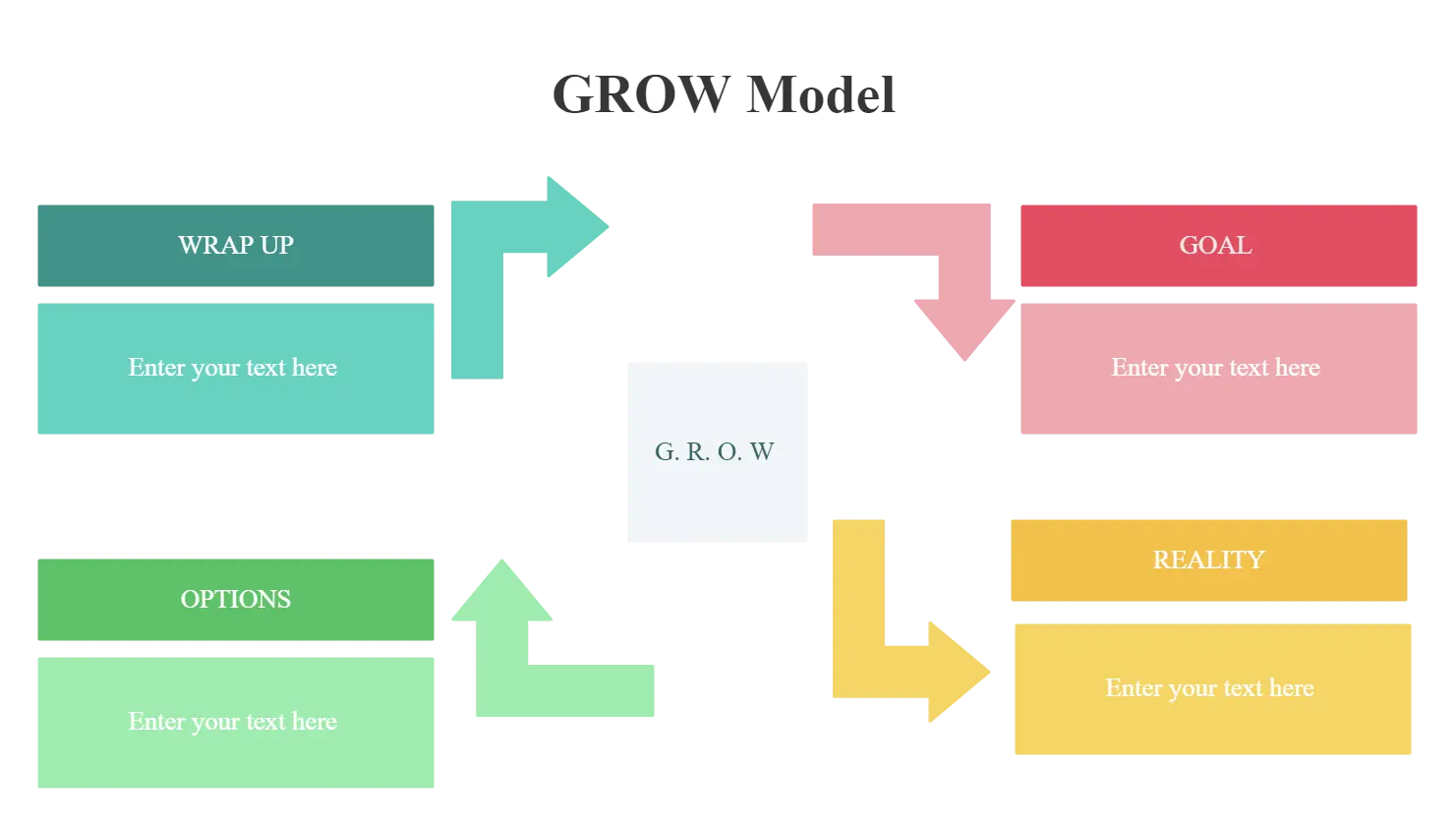
Benefits of an Effective Employee Onboarding Process
Improves employee retention
An effective onboarding process helps new hires feel connected and supported, which reduces turnover and keeps valuable talent within the company.
Increases productivity
When employees understand their roles and responsibilities from the start, they can contribute more quickly, boosting overall productivity.
Enhances company culture
Onboarding introduces new hires to the company’s values and culture, helping them align with the organization’s mission and work well with their teams.
Reduces learning curves
A structured onboarding process provides clear guidance and resources, helping employees adapt faster and reducing the time it takes to get up to speed.
Boosts employee engagement
Engaged employees are more motivated and committed to their work. Onboarding fosters this engagement by making new hires feel valued and prepared.
Ensures compliance and consistency
Onboarding ensures that all employees receive the same essential information, ensuring compliance with company policies and legal requirements.
Builds confidence in new hires
A well-designed onboarding process gives new employees the tools and knowledge they need to feel confident and capable in their new roles.
Ready to Optimize Your Employee Onboarding Process?
By investing time and effort into an effective employee onboarding process, you not only help new hires feel valued and prepared but also set the stage for long-term success within your organization.
From boosting productivity and engagement to strengthening company culture, a well-designed employee onboarding process benefits both employees and the organization as a whole. As you refine your onboarding approach, remember that the goal is to make every new hire’s transition as smooth and supportive as possible. By doing so, you’ll build a strong, motivated, and cohesive team ready to contribute to your company’s success.
Want to improve your organizational performance? Learn about more techniques to improve employee performance with our visual guide to improving organizational performance.
FAQs About Onboarding New Employees
How long does the onboarding process typically last?
What are the key benefits of a well-structured onboarding program?
- Improved employee retention and engagement.
- Faster time to productivity.
- Increased job satisfaction and morale.
- Enhanced understanding of company values, culture, and expectations.
- Smooth integration into the team and organization.
- Reduced stress and anxiety for new employees.
- Higher likelihood of long-term success in the role.
How can I create an onboarding plan that suits my company’s needs?
- Assess your company’s culture, values, and goals.
- Identify the key information, skills, and resources new employees need to succeed.
- Develop a comprehensive onboarding checklist or timeline.
- Incorporate a mix of formal training, mentorship, and hands-on experiences.
- Customize the plan for different roles or departments as needed.
- Gather feedback from current employees and new hires to continuously improve the process.
How can I ensure that new employees feel welcome and included in the company culture?
- Assign a mentor or buddy to guide them through the initial weeks.
- Provide a warm and friendly introduction to the team.
- Encourage social interactions through team-building activities.
- Share information about company values, traditions, and events.
- Offer opportunities for new employees to contribute and share their ideas.
- Foster an inclusive environment where everyone’s perspectives are valued.
- Provide clear communication channels for new employees to ask questions and seek support.
How can I measure the success of my onboarding program?
- Conduct surveys or interviews with new hires to gather feedback on their onboarding experience.
- Monitor retention rates and early performance indicators.
- Track the time new employees take to reach key milestones or goals.
- Compare the onboarding experience of successful employees to those who didn’t perform as well.
- Use employee engagement surveys to gauge the level of satisfaction and integration.
- Continuously review and update your onboarding program based on feedback and data.
How can I address common challenges or obstacles during the onboarding period?
- Clearly communicate expectations and provide detailed information about job responsibilities.
- Provide adequate training and resources to support new employees in their roles.
- Offer ongoing support and check-ins to address questions or concerns.
- Foster open communication channels for new employees to express their difficulties.
- Establish a culture of patience, understanding, and teamwork.
- Continuously assess and improve your onboarding process based on feedback and lessons learned.
What role does HR play in the onboarding process?
Human Resources (HR) plays a crucial role in the onboarding process. They are typically responsible for tasks such as:
- Coordinating the administrative paperwork and legal requirements.
- Facilitating new hire orientations and training sessions.
- Providing information about company policies, benefits, and procedures.
- Assisting with the completion of necessary forms and documents.
- Serving as a point of contact for new employees' questions or concerns.
- Collaborating with managers and supervisors to ensure a smooth onboarding experience.
- Monitoring and evaluating the effectiveness of the onboarding process and making adjustments as needed.
What are some best practices for onboarding new employees?
- Start the onboarding process before the new employee’s first day by sending them a welcome package, providing access to relevant documents or resources, and setting clear expectations.
- Create a well-structured onboarding plan that includes a mix of orientation, training, and hands-on experiences.
- Assign a mentor or buddy to guide and support new employees.
- Provide a comprehensive introduction to the company’s culture, values, and goals.
- Clearly communicate job responsibilities, performance expectations, and opportunities for growth.
- Foster a positive and inclusive work environment where new employees feel valued and supported.
- Offer regular check-ins and feedback sessions to address questions or concerns.
- Encourage networking and collaboration among new hires and existing employees.
- Continuously evaluate and improve the onboarding process based on feedback and data.
- Remember that each organization is unique, so adapting these best practices to align with your company’s specific needs and culture is important.


![Organizing for Success [3] : Map out your Organization Structure](/static/assets/guides/organizing-for-success/Organizational-Chart-Best-Practices-for-Meaningful-Org-Charts-header.webp)


